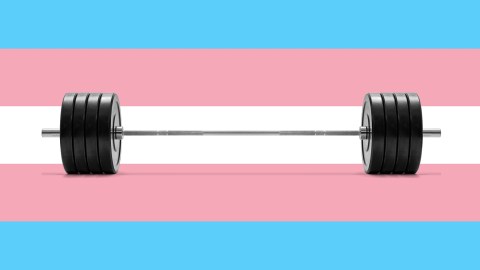The blunt scientific truth about transgender women’s athletic ability

- In a new study, researchers at the University of São Paulo assessed the strength and aerobic ability of transgender women undergoing long-term hormone therapy as well as those of cisgender men and women matched by age and physical activity levels.
- The researchers found that transgender women had about 40% greater muscle mass than cisgender women. Moreover, they were about 19% stronger and had 20% greater cardiopulmonary capacity.
- By current NCAA and Olympic rules, these women are allowed to compete in women’s sporting events.
Whether or not transgender women should be allowed to participate in sports along with cisgender women has been controversial (to put it mildly), with strong feelings and compelling arguments on both sides of the debate.
Those opposed to their participation generally contend that transgender women — who were born as biological males — have an unfair advantage over their cisgendered competitors owing to their earlier development as men, which boosted their physical ability. Those in favor of their participation argue that excluding them harms their well-being and violates their human rights.
While it’s difficult for science to weigh in on the latter contention, it certainly can inform the former. A recent study did just that.
Biological reality
Researchers based out of the University of São Paulo in Brazil recruited 15 healthy, transgender women with an average age of 34 who were undergoing long-term, gender-affirming hormone therapy. These women initiated their transition at a median age of 17 and had been taking hormones for an average of 14.4 years. The researchers then recruited cisgendered men and women matched by age and physical activity level to serve as comparison controls.
All of the participants were invited into the laboratory and underwent various metabolic and physical testing. For instance, the researchers measured their testosterone levels, body-mass index, muscle mass, and body fat percentage. Afterwards, subjects’ strength was assessed with the oft-used hand-grip test and their cardiopulmonary capacity (defined as “the maximum ability of the cardiovascular system to deliver oxygen to exercising skeletal muscle and of the exercising muscle to extract oxygen from the blood”) was determined via running on a treadmill with rising difficulty until exhaustion.
The researchers found that, although the transgender women had about the same testosterone levels as the cisgender women, they had about 40% greater skeletal muscle mass. Moreover, they were about 19% stronger and had 20% greater cardiopulmonary capacity. Interestingly, transgender women’s athletic markers generally fell right in the middle between cisgender men and women.
Hormone therapy doesn’t completely change the body
“Long-term estrogen exposure and testosterone suppression were not enough to completely shift the body composition of transgender women to the female pattern, despite their direct and indirect effects on fat and lean mass,” the researchers wrote.
The research is undeniably limited by a small sample size. It also didn’t look at high school or even college-aged students, about whom much of the societal debate over transgender women’s participation in sports takes place. Moreover, all the transgender women transitioned after age 12, so likely experienced at least some puberty, when a lot of sexual development occurs. (Hormonal transition is generally not recommended until at least one’s mid-teens.) Lastly, while the participants tended to be quite physically active, none were technically athletes.
Still, the research does show that even transgender women undergoing long-term hormone therapy, with testosterone levels comparable to cisgender women, likely have a significant advantage in raw physical ability over women born biologically female. By current NCAA and Olympic rules, these women are allowed to compete in women’s sporting events.





